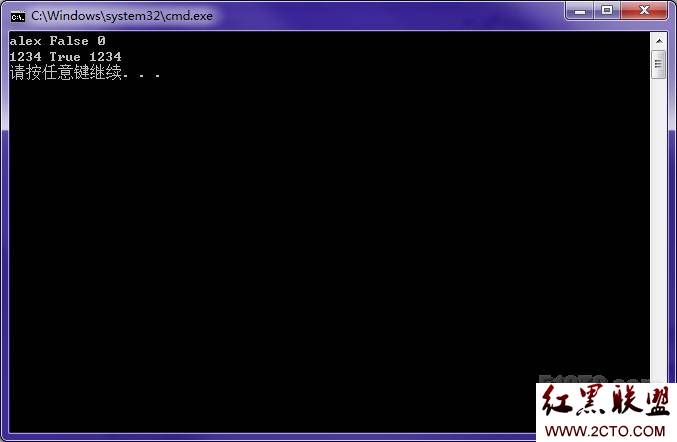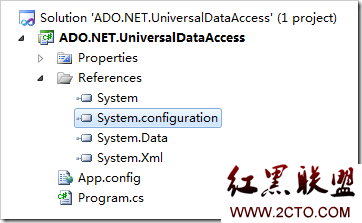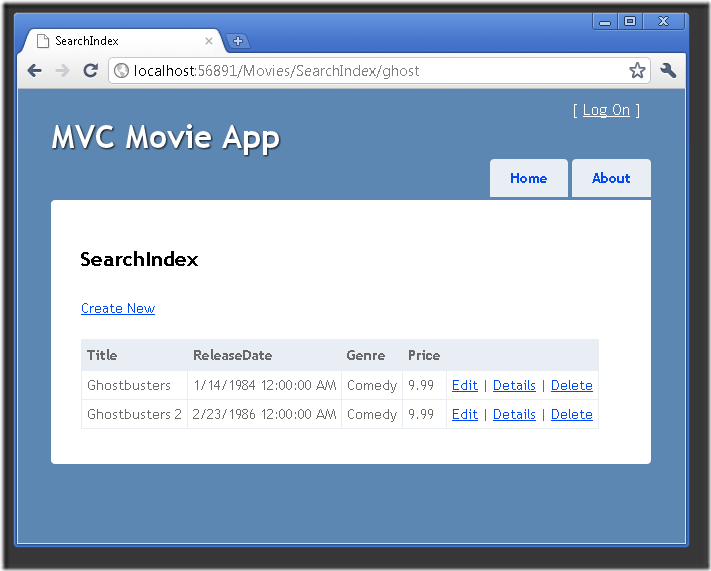答案:5.3.2 Dictionary对象示例
本书提供了一系列示例文件可用来试验脚本运行时间库的各种属性。
本章代码的缺省页面提供了一系列可使用的VBScript示例链接。有些示例对JScript同样有效。这些示例存放在Chapter05目录下相应的子目录里,显示的界面如图5-2所示:
图5-2 ASP脚本运行期对象示例页面
要查看Dictionary对象的运行,在菜单页面点击第一个链接,打开名叫show_dictionary.asp的页面。这个页面显示了我们提供的Dictionary对象的内容,允许试验其属性和方法。屏幕如图5-3所示:
图5-3 Dictionary对象的属性和方法
1. Dictionary的global.asa文件
随Dictionary对象示例页面提供的文件之一是global.asa。它创建并预先填充了一个会话层作用域的Dictionary对象,因此其内容在页面请求之间不会丢失。一般说来(考虑到可扩展性),这不是一个理想的做法。在这个例子里,可以看到Dictionary的属性和方法的效果。
如果在自己的服务器上下载并安装示例,必须创建一个基于此global.asa文件的虚拟应用程序。或者将其内容添加到缺省站点的根文件夹中的global.asa文件里。在第3章讲述了如何用向导创建虚拟应用程序。然而对于本示例,创建一个虚拟应用程序最简单的方法是在Chapter05示例文件夹内右击dictionary子文件夹,在Properties对话框的Home Directory选项卡里,点击Create按钮,如图5-4所示:
图5-4 创建虚拟应用程序
在这个global.asa文件里,代码使用<OBJECT>元素创建一个会话层作用域的Scripting.Dictionary对象实例。然后在Session_onStart事件处理程序里将一系列值用Add方法放入Dictionary中,并将对Dictionary对象的引用指定给ASP会话变量MyDictionary:
<OBJECT ID="objBookList" RUNAT="SERVER" SCOPE="SESSION"
PROGID="Scripting.Dictionary">
</OBJECT>
<SCRIPT LANGUAGE="VBScript" RUNAT="SERVER">
Sub Session_onStart()
objBookList.Add "2610", "Professional Active Server Pages 3.0"
objBookList.Add "1274", "Instant javascript"
objBookList.Add "2882", "Beginning ASP Components"
objBookList.Add "1797", "Professional ASP Techniques"
objBookList.Add "1835", "AD0 2.0 Programmer's Reference"
Set Session("MyDictionary") = objBookList
End Sub
</SCRIPT>
2. Dictionary示例页面
在“Scripting.Dictionary Object”主页面里,首要的任务是得到一个会话层作用域的Dictionary对象实例的引用。注意,这个引用是一个对象变量,因此必须在VBScript里使用Set关键字。
然后,检查一下是否得到了一个对象(这是个好习惯),如果没有正确地建立包含global.asa文件的虚拟应用程序,检查一下问题出在哪里。你将看到我们自己的消息代替了ASP的错误消息(但是注意,对于这一操作必须关闭缺省的错误处理)。
<%
on error resume next ' turn off error handling to test if object exists
'retrieve Dictionary object from user's session
Set objMyData = Session("MyDictionary")
If IsObject(objMyData) Then 'found Dictionary object in Session
…
%>
<P><DIV CLASS="subhead">Iterating the Dictionary with Arrays</DIV>
<%
arrKeysArray = objMyData.Keys 'get all the keys into an array
arrItemsArray = objMyData.Items 'get all the items into an array
For intLoop = 0 To objMyData.Count - 1 'iterate through the array
Response.Write "Key: <B>" & arrKeysArray(intLoop) & "</B> Value: <B>" _
& arrItemsArray(intLoop)& "</B><BR>"
Next
%>
…
… Other code and controls go here …
…
<%
Else
'could not find Dictionary object in the session
Response.Write "Dictionary object not available in global.asa for session"
End If
%>
显示在页面上的Dictionary内容列表是使用Dictionary对象的Key和Items方法创建的两个数组,可使用前面的代码遍历它们。
3. Dictionary页面控件
在Dictionary的内容列表下是一系列的HTML控件,可用于设定Dictionary对象的某些属性和执行各种方法。这些控件全部在一个<FORM>内,其ACTION属性值是本页面,所以窗体的内容提交回本页面。在前面的章节的示例里使用了同样的技术。
在<FORM>段中,改变属性或执行一个方法是通过一个按钮(没有标题)实现的。用于属性和方法的值放入按钮旁的文本框或列表框中。
该页的第一个按钮用于设定Dictionary里的条目的Key属性。这里使用了一个下拉列表,可以选择一个已经存在的Key值。下面的代码创建了页面内该部分的控件。为了填充列表,使用了另外一个遍历Dictionary对象的技术,即For Each … Next语句。代码如下:
…
<FORM ACTION="<% = Request.ServerVariables("SCRIPT_NAME") %>" METHOD="POST">
<P><DIV CLASS="subhead">The Dictionary Properties</DIV>
<INPUT TYPE="SUBMIT" NAME="cmdChangeKey" VALUE=" ">
Dictionary.Key ("
<SELECT NAME="lstChangeKey" SIZE="1">
<%
For Each objItem in objMyData
Response.Write "<OPTION>" & objItem
Next
%>
</SELECT> ") = "
<INPUT TYPE="TEXT" NAME="txtChangeKey" SIZE="15" VALUE="New Key Name"> "
<BR>
…
… Other controls go here …
…
</FORM>
…
4. 使用Dictionary的属性和方法
在“Scription.Dictionary Object”页面,点击用来检查并改变条目的Key属性的按钮,如图5-5所示:
图5-5 使用Dictionary的Key属性
把窗体再次提交给页面。该页面包含一个脚本段,检查被点击的按钮的值。它通过在Resquest.Form集合里查找按钮的名字来断定单击的是哪个按钮。如果发现一个对应于cmdChangKey的值,则从列表中或文本框中得到相应的值并用来改变Key属性:
…
'look for a command sent from the FORM section buttons
If Len(Request.Form("cmdChangeKey")) Then
strKeyName = Request.Form("lstChangeKey") 'Existing key from list box
strNewKey = Request.Form("txtChangeKey") 'New key value from text box
objMyData.Key(strKeyName) = strNewKey 'Set key property of this item
End If
…
页面重新载入后,在Dictionary的内容列表里能看到相应的结果,如图5-6所示:
图5-6 页面重载后的结果
页面的其余代码用来设定一个条目的Item属性,或者执行Dictionary对象的方法。下面是这些操作的代码,每段代码与演示Key属性的代码非常类似。每次都将结果显示在Dictionary的内容列表中:
…
If Len(Request.Form("cmdChangeItem")) Then
strKeyName = Request.Form("lstChangeItem") 'Existing key from list box
strNewValue = Request.Form("txtChangeItem") 'New item value from text box
objMyData.Item(strKeyName) = strNewValue 'Set the Item property
End If
If Len(Request.Form("cmdAdd")) Then
strKeyName = Request.Form("txtAddKey") 'New key value from text box
strItemValue = Request.Form("txtAddItem") 'New item value from text box
objMyData.Add strKeyName, strItemValue 'Execute the Add method
End If
If Len(Request.Form("cmdRemove")) Then
strKeyName = Request.Form("lstRemove") &n
- 更多asp疑问解答:
- asp正则过滤重复字符串的代码
- 用asp过滤全部html但保留br类似的符号
- 会asp,但感觉asp要过点,想学php。但我一般做的都是小公司的站,用access数
- PHP的空间可以用ASP的源代码吗?
- 以前做asp程序,现在应该怎样发展?是学.net还是php
- 以前做asp程序,现在应该怎样发展?是学.net还是php
- 想做一个市级的人才网acess,sql数据库,语言asp,jsp,php分别用哪种好
- jsp,asp,php 区别
- 我想找一个有比较多漏洞的网站的源码,比如可以asp,php注入等都可以。供学习研究用。请提供下载地址。。
- 现在候找人做个网站,用ASP,还是PHP语言去做好
- asp,php ,jsp,.net 对于做网站前台的重要吗?
- asp和php的区别是什么?
- 我是新手SEO菜鸟 请问wp dw php asp cms myspl dede 这些软件应该如何区分呀?
- 网页制作相关的三种语言:ASP JSP PHP那个好点,简单点?
- 网页制作相关的三种语言:ASP JSP PHP那个好点,简单点?






